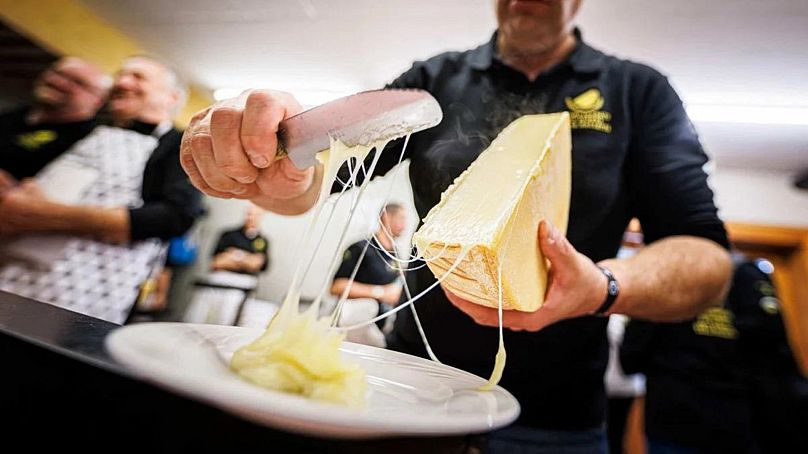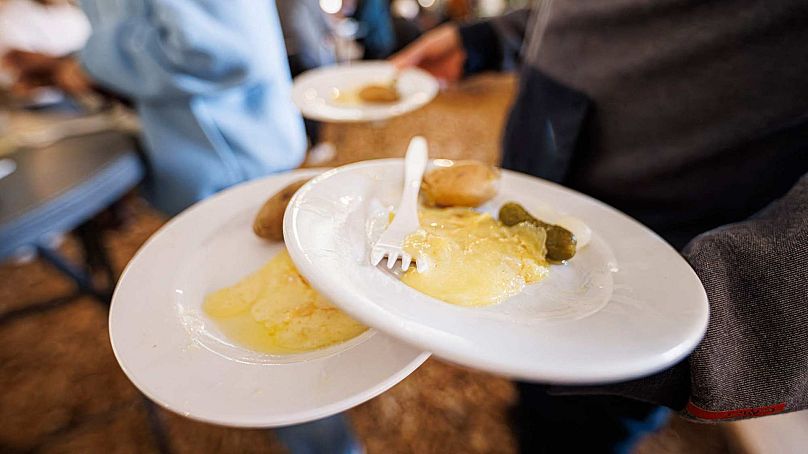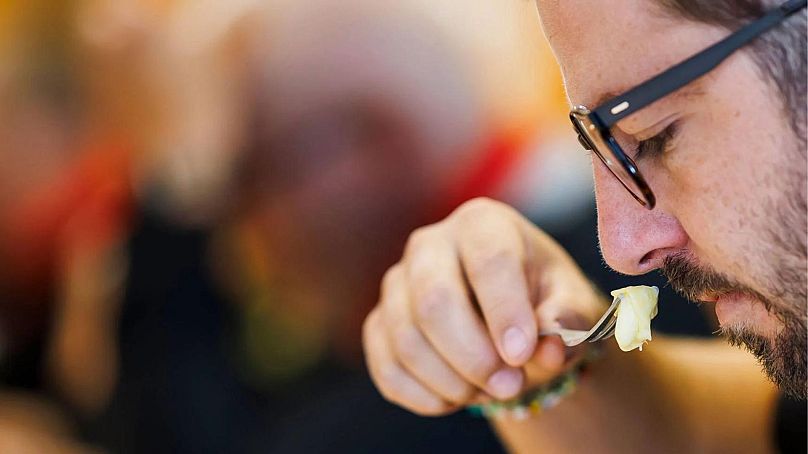Over the course of three days, raclette lovers from around the world gathered in a small Swiss village, to attend the inaugural Raclette World Championships where almost 90 cheeses were put to the test.
High up in the Swiss Alps, the air was filled with the tantalising aroma of sizzling hot cheese as the world's best varieties battled it out at the inaugural Raclette World Championships.
The Swiss native dish dates back centuries to a time when mountain herdsmen would heat their cheese on an open fire and scrape off the melted part to keep them going.
But never before have cheesemakers, experts and restaurateurs come together under one roof to determine which cheeses make the world’s finest raclette.
Nearly 90 cheeses from seven different countries were put to the test in Morgins, a village in Valais – the southwestern region considered the home of raclette.
“All these guys are small-scale producers who go up into the mountain pastures with their cows at the start of summer,” says the event’s founder, Henri-Pierre Galletti.
“It’s a way of validating their work, which is a hard job but a truly beautiful one,” he says.
Cheese connoisseurs converge
Morgins – more than 1,300 metres up in a wooded valley before the Alpine pass reaches France – welcomed more than 10,000 raclette enthusiasts, who joined in the festivities and sampled the wares.
The three-day event culminated on 29 October with the winners crowned champion.
In the village hall’s kitchen, cheese half-wheels are grilled under electric raclette heaters. The grilling can take from 30 seconds upwards, depending on the cheese.
The cooking is done by eye, with a feel for how each cheese melts. Once it bubbles up – but just before it starts to brown – the melted cheese is scraped onto the plate, then whisked out to jurors.
What makes a good raclette?
“We are looking for a raclette that is creamy, smooth, has a nice appearance, a nice colour,” says Eddy Baillifard, known as the “pope of raclette” and one of the supreme jury final round judges, “and in terms of taste: a nice texture, no thread, no strings, no gum.”
Judges sample a maximum of 15 cheeses in a sitting, after which the sense of taste will have peaked – plus, in a 40-gram serving, there’s only so much cheese one can handle.
Between raclettes, hot black tea or sliced red apples neutralise the palate.
The judges rank each cheese from one to five on appearance, texture, taste and aroma, and overall impression.
Who were the winners?
The championships had three categories.
In the most hotly contested crown for raclette with raw Alpine milk, a category only open to cheeses made in Alpine pastures between 15 June and 15 July, "Alpage de Tanay," a Valais-based cheesemaker, clinched victory.
Another Valais entrant, "Fromagerie Le Pont," emerged triumphant in the category of raw milk raclette.
"Fromagerie Seiler Selection," a creation by Wyssmuller Maître Fromager from the central Swiss region of Obwalden, took the final crown for other raclette cheeses.
More than 30,000 raclettes were served to the public, accompanied by four tonnes of boiled potatoes and six pallets of gherkins and onions.
“A day without raclette is a day wasted,” says Baillifard.














